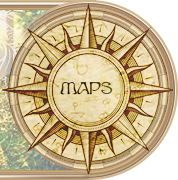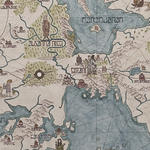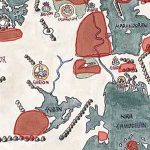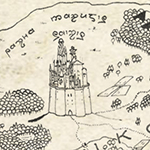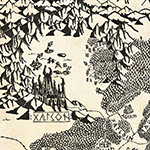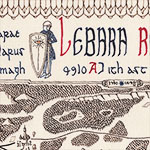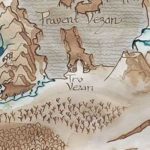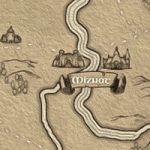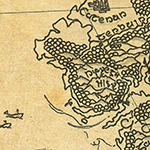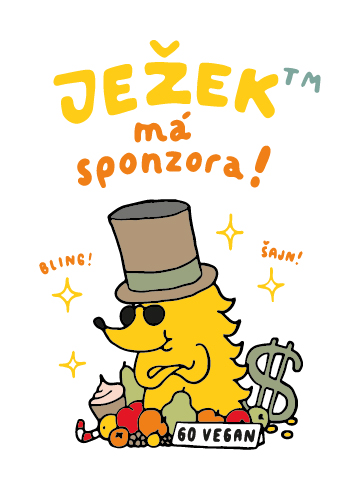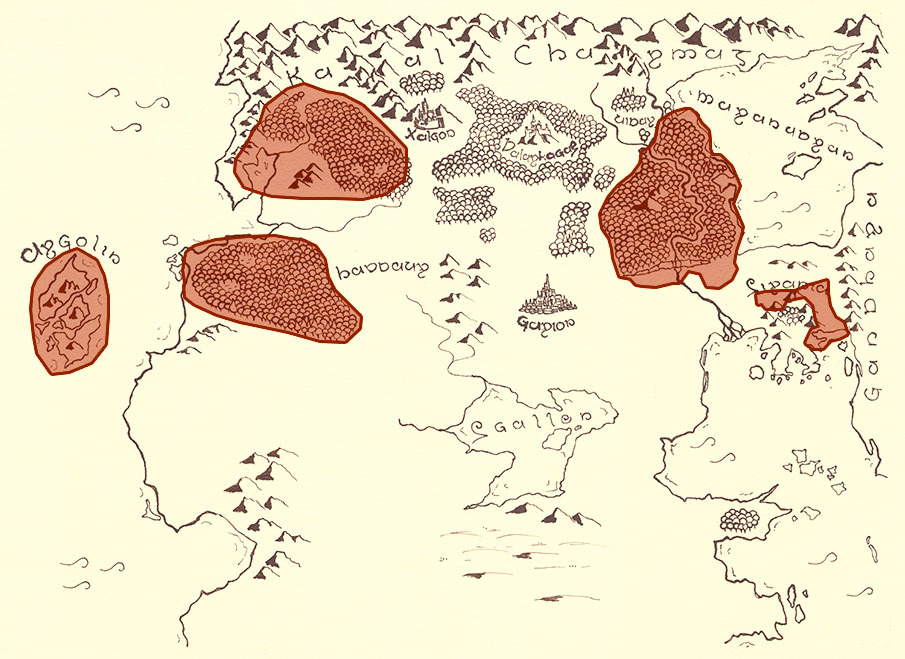
Alpás in common Siranian, Alpas in standard language, Albhai in Gandharian, otherwise known as the Elves. (You can read more about the Elves here and about Elvish languages here.) An ancient race said to be born with the world itself. Unlike the majority of other races, the Elves are endowed with immense longevity; they are also calmer and gentler in nature than other nations. They live in bond with the natural forces, and unlike others rarely change their customs or character throughout the course of their lives. Similarly to the animals of the forest, they live in harmony with their surroundings, possessing an intrinsic wisdom of equilibrium and non-intervening. This wisdom is generally unavailable to other races, where it is replaced with instrumental rationality. The Elves, on the other hand, do not much care for human reason and cunningness; they cultivate their own approach to life where inspiration and intuition wed hundreds of years of experience.
Their long life and gathered knowledge are two-faced: on the one hand, they do not need to fumble in the dark, to speculate or experiment as often as their human counterparts – they simply know. On the other hand, however, they are at times far too clear about things; they cannot be mollified by words and tend to meet any sudden changes with profound dislike and rigidity.
As for the appearance, there are very few features that could be considered universally Elvish – only some of the Elven nations are discernible by their pointed ears (a trait especially pronounced in the Wood and the Wild Elves); not all of them are completely beardless (the Grey Elves often have beards, though softer, more hair-like). In general, the Elves are more finely and more thinly build than humans and their almond-shaped eyes are mildly slanted, but there are some exceptions too – the Dark Elves, for instance, are often remarkable fighters, while the eyes of the Grey Elves tend to be more even, like those of humans. Ultimately, however, it is always easy to recognize an Elf; not due to their physical build but because of the impression they have on others. The Elves have the charm and elegance similar to that of a doe or a wolf; aware of their longevity, they are unhurried and unrushed. Their eyes have a peculiar glint; they laugh and weep differently. The Elves are far from being perfect – there are fools among them, drunks and madmen and criminals, though even they go about their business with the Elvish style – with a lot of poetry (whatever its quality) and elegance (however bent and twisted it may be).
There are many Elven nations and these can be divided into numerous groups with varying habitats, customs, character traits and appearance so that in fact, the Elves – at least visually – almost form independent “races”. In the end, however, they share the collective essence of Elfhood.

The Un-born are the forefathers of the Elves and they rose together with this world. They are gods, originated from themselves. These beings, whose numbers do not exceed nine, rank among Powers like those of the Andals and Archonts. Some attained a complete union with a certain part of nature, becoming the subject of ”Elven religion”. A few among them turned their gaze towards the Abyss and became dark deities, worshipped mainly in the Far West and Far North but also in the hidden temples scattered all over Grand.
The cult of the Un-born is different in character than the cults of gods revered by other races. While the gods of Pantheon, for instance, are dependent on their worshippers and their potency equals their popularity, the Un-born do not derive their power from worshipping. They are here whether someone worships them or not. Therefore, the Elves do not hold expensive ceremonies in their name; they do not spread their faith among others but instead, at certain moments of a day or a year, simply remember the presence and greatness of the Un-born through symbolic acts of paying tribute. Their connection with the Un-born is special in the sense they are related to them – the Un-born are the forefathers of all the Elves and as such stand at the beginning of all the Elvish family-trees. At the same time, they are still present and till this day shed light to the earth and give it life. A special chapter is dedicated to the topic of their characters and names. As for their form, it is thought the Un-born (apart from one exception) are too great and too immense to even assume the appearance of a two-legged being. They are fully identical with what they are, whether one talks about the Sun, the Moon, or the Mist. More perceptive individuals can recognize the will of the Un-born as a sort of a ”voice” that speaks to them.

THE FIRST-BORN
The descendants of the Un-born originated through the awakening of latency in the space between the Un-born. They are more numerous than their begetters, and their power and character are the diminished analogues to those of the Un-born. Once they were even more plentiful but the wars of old brought about the thinning out of this eldest generation, of which many decided to not return to their bodily form. They are powerful lords among the Elves, rulers and noble princes, who remember the ancient ages; they are the heroes of the old sagas and legends. Unlike the Un-born, however, they already know partial mortality – they cannot waste away with old age but they can die a violent death. If they lose their body, they can decide to either remain in latency or be born again.
The First-born are marginal beings in the sense they put on the Elvish appearance like they would a cloak or a robe meant for the life in Grand, but their essence is still relatively wild and elemental. Their ”true form” is usually some kind of ä shining, flaming or ghost-like entity many times surpassing the human proportions and yet not as gigantic as the Sun or the Moon. Their powerful essence – after all, they are the sons of the Sun, the Mist, the Darkness, the Stardust and so on – turns them into beings of great nobleness and tenacity, little resembling anything mortal in both the good and the bad sense. Their will is like a flame or a waterfall; it is hard to withstand. Their words fill one with enthusiasm, their voice rules and dominates, their faces are beautiful and terrible. Only beings of a sound and firm mind can keep a cool head in the presence of the First-born, without becoming mere puppets in their hands. Fortunately, most of the First-born with the tendency of abusing their powers left the world at the time of the ancient wars, and those walking the face of Grand today have grown wiser with age and tamed the flame of their will through long years of experience.

HIGH ELVES
The High Elves are a nation unknown to ordinary mortals, universally superior to the other Elven nations, whom they surpass in everyting. They are more beautiful than the Wood Elves, more dangerous than the Wild Elves, more skilful than the Grey Elves, and more mysterious than the Sea Elves. Their hair is raven black and their eyes are as bright as the stars. Their magical palaces and shining cities are not found in the lands of men but instead hover in the air in Alpasthanara, the land of legends – a place only a well-instructed being can enter, or an exceptionally gifted traveller who finds trails and footpaths, hidden in the depths of the woods, leading into the Elven worlds.
The High Elves are known to the world rather by the traces they left in it. In the Ages of the Elves, they build their cities in Grand, whose ruins, though rare and overgrown, can still be found in some deep woods. From time to time, a foolish traveller enters here seeking hidden treasures but more often than not finds a quick death from the hands of invisible powers or dangerous artefacts. The High Elves have always been great builders and creators, walking the hair-thin boundary between technology and magic (they themselves called their teaching ”Art” and refused to categorize it in any way). Till this day, a High Elven artefact sometimes emerges out of nowhere, and both mages and technicians of this world are usually helpless as to its workings.

WOOD ELVES
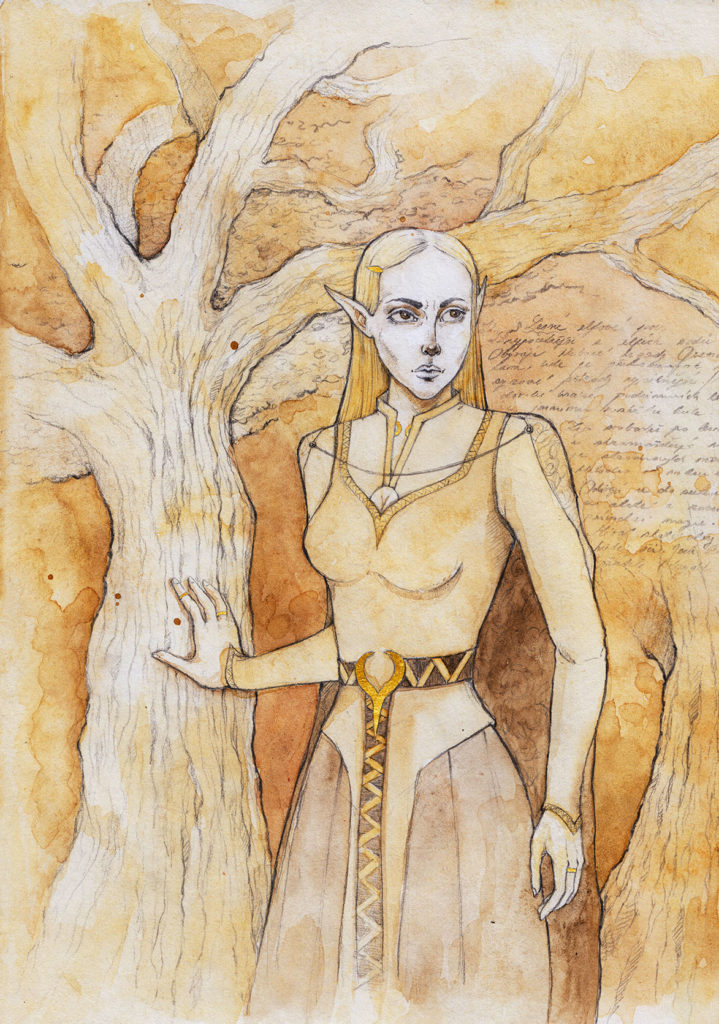
The Wood Elves are the most numerous of the Elven nations. They inhabit the deep woods of Grand, where the presence of raw nature is at its strongest. They favour the beauty of the autumn forest as well as the springtime blossoming of the meadows.They live freely, scattered across the woods, and gather in tree cities deep in the heart of the forest. They like to dress in green and gold and have understanding of natural magic. Usually, they have golden hair and brown eyes. They are great friends of the Dryads.
The hearts of the Wood Elves are good and kind, their relationship with Men torn and full of tragedy. These Elves are friendly by nature and know from experience there are good souls among humans – thus they come to believe over and over again the relationship between the “field” and the “forest” can be amicable. But the generations of Men disappear one after the other and the Men forget. And so it often happens that what the old generation once agreed on, coining deep bonds and friendships, the young generation does not remember or honour anymore but instead, with insatiable hunger, rushes to cut down trees. Then the Wood Elves, weeping, draw their bowstrings and go to war against the sons and daughters of those they only yesterday (as they see it) considered their friends.
The tragic nature of the relationship between Men and Elves extends to personal stories as well. The Wood Elves, both male and female, are creatures of great beauty to the human eye, full of elegance and magic. On the other hand, the human youths and maidens, filled with zest and wildness, are very attractive to the curious Elves living at the edge of the woods. Hence there is no scarcity of romances coined at the forest margins. However, these romantic stories almost always end in tragedy. Both the Elvish and the human communities naturally forbid such unions, so the lovers must act in secrecy, and their permanent coexistence is impossible on either of the two sides. Even in those rare cases where the society allows for a similar union, their life together does not last long as their otherness, attractive at first, becomes bothersome, almost alienating, in a day-to-day existence. And if the couple overcomes even this difficulty, they must eventually face the tragedy of ageing and death – the forever young Elf is seen supporting the feeble old man or woman, who in the end dies in their unaging lover’s arms.

THE WILD ELVES
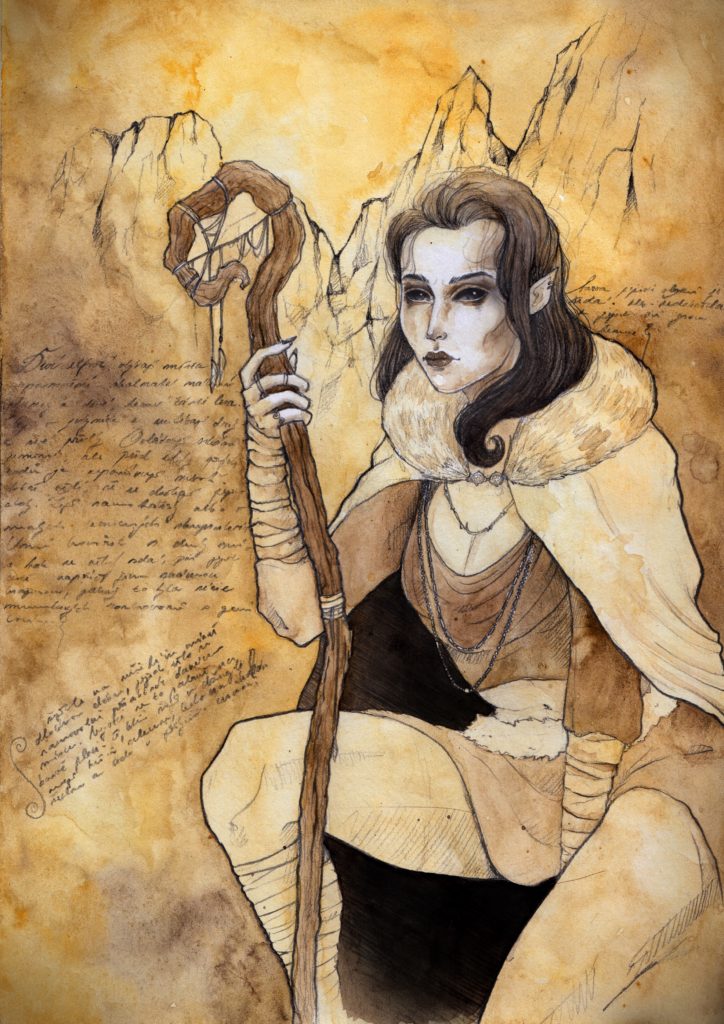
The Wild Elves inhabit the places of oblivion – the rocky plateaus and wild, dark parts of the forest. They live in caverns, worshipping spirits and their ancestors. They have mastered the forbidden arts but choose not to use them in the presence of the other Elven nations, knowing full well they would only reap malice and scorn. They are grey or brown-grey of hair and their eyes are dark. They live solitarily in small or tribal groups.
They can talk to spirits of different places, so sometimes, travelling across lands they know well, they seem to be engaged in a series of mumbled conversations with the genia loci. Thus, from their point of view, their lives are far from solitary as they are in a constant discussion with friends, invisible to people, but also with animals and plants.
Compared to other Elves as well as Men, the Wild Elves are not repelled by things considered dark or fallen. In their hearts, there is no duality in terms of dividing things into good or bad; they see only things in harmony with fate, or against it. To them, anger, madness or a blood sacrifice have the same value and beauty as a tender caress, a birth or an evening filled with stories.
The Wild Elves are also known for one peculiar feature intrinsic to their physicality. When they have lived in any given place for an extended period of time, their bodies spontaneously adapt to it. It is most obvious in the colour of their complexion. In those living in the jungle it tends to be green, those inhabiting rocks seem grey while the cavern-dwellers are black. But the changes go deeper than the colour of the skin. Depending on their environment, they have a sharper vision or a better sense of hearing. In northern lands in winter, similarly to the Dryads, they grow warming hair, and the Wild Elves dwelling in the caverns can see in the dark.

GREY ELVES
Of all the Elven nations, the Grey Elves are most likely to be encountered by mortals. In the fashion of Men, they inhabit stone or wooden cities, though imbued with Elvish gracefulness and elegance. In a way, their houses are still touched by the forest – a living tree may tower in the centre of one’s hall, or there’s a garden alcove deftly crafted from living twigs and branches. The Grey Elves live off of trade; they mediate communication between the Elves who loathe humans and human civilization. The Grey Elves do not despise people or fear them; often they enjoy human endeavours like the afore-mentioned trade, crafts or science, which they indulge in above all. The towns of the Grey Elves are often situated around a famous school or university. The Grey Elves have both light and dark hair, usually in the shades of brown; sometimes, they even have darker skin, especially if living in the south. This is because they have mingled with humans for generations.
This mixing between peoples has resulted in the Grey Elves lacking in some of the more exotic features typically associated with the Elven race, i.e. mildly slanted eyes and pointed ears. Thus from afar, it is usually easy to mistake them for humans, at least at first sight, though once coming closer, seeing the softness of some of their features and the elegance of their movements, a person will still know them for an Elf. Some Grey Elves will also grow facial hair and so honourable professors can go around proudly boasting their beautiful grey beard. The mixing with humans goes hand in hand with another matter: ageing and lifespan. The Grey Elves live to a considerably lower age than other Elven nations, roughly twice (in case of the Half-Elves) to ten times the length of a human life, depending on the amount of human blood running in their veins.
The question of the “purity of blood” periodically returns as a topic in some of the Grey Elven communities. While in the Elven quarters in Sirgon and the “cosmopolitan” diaspora all across Sirania no one gives the matter much thought, in Asvittara, there is a strictly structured caste-based system where the amount of “contamination” by human blood determines what station a person can reach in their life and which profession they can practice. In some cities, for instance Gindon, the situation is somewhat halfway in between, which causes a constant subliminal tension in the society.

SEA ELVES
The Sea Elves are a relatively unknown nation inhabiting both the ice-cold seas in the north and the beautifully colourful seas of the south. They can talk to fish and dolphins; they are friends with the Naiads and Tritons and understand the tongue of the sea currents. They can turn into dolphins or medusas but also whirlpools and treacherous torrents. Few have ever spoken with them and so their language remains secret. The tone of their skin ensures they are difficult to spot in water: their backs are blue-green while the fronts of their bodies are grey. Their hair is green or blue, sometimes even white like the foam on the waves. Most of the time they go completely unclothed but on the occasion of feasts or celebrations, they adorn themselves in pearls, seashells and corals.
The Elves of the southern seas are one of the few nations maintaining a friendly contact with the Antipodes, the legendary inhabitants of the far South who were long ago invited North by the High Elves and whose arrival was one of the causes of the racial battles raging at the end of the Elven Age. Just as little is known about the quiet war the Sea Elves have waged for ages against the Falascan sea realm. The Falascans, similar to the Vezanians, have succumbed to the cult of the Zilaths and the un-known beings of the Deep; it is said that nowadays they build underwater cities were they invoke and worship their tentacled idols and fish-like deities.

DARK ELVES
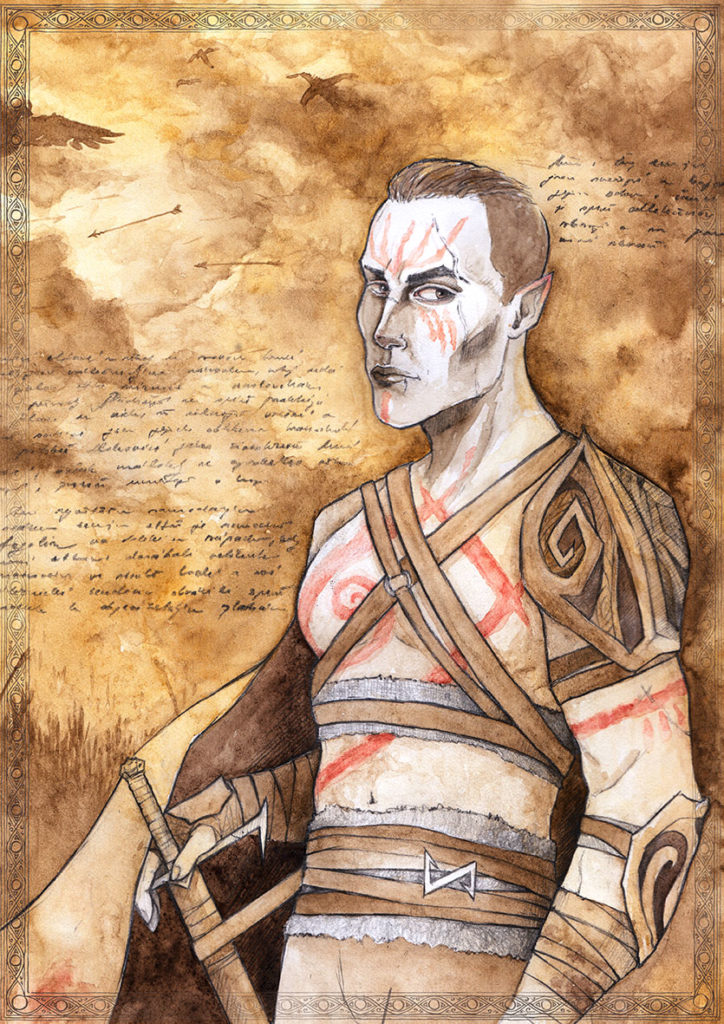
In appearance, the Dark Elves are very similar to humans. Unlike in other Elven nations, their faces and figures are energetic, unrestrained, and sturdy. Their hair is brown, red or black; their eyes are usually dark, not blue or green (as is common with the Wood and Grey Elves). Their expression tends to be somewhat stubborn, restless, interested, mischievous, angered. The colour of their skin varies from light to dark red-brown. They are irritable, ambitious and merciless by nature. Sometimes they are called the “Cruel Elves”. They are a warrior nation, not very keen on the usual Elven gentleness, nor eager to harken to the voices of nature. More often, they swear by practical things. In their world, the stronger one always wins, and personal duels are their favourite pastime. Although they are similarly long-lived as the pure-blooded Wood Elves, they seldom live to enjoy high age due to their frequently dying in battle – the longer they live, the higher the stakes the warrior’s luck eventually won’t take their side.
Both males and females are fierce and warlike; even their every-day clothes are a variation to the lightened leather-armour and they always carry a weapon at their belts. Tattoos and war paints are very common among them: tattoos serve as a sort of a personal chronicle of brave or warrior deeds while facial warpaint is meant to help distinguish between the rival tribes during an armed conflict.
Perhaps the greatest independent state of the Dark Elves is the Argolin archipelago in the far west, where the Elves have achieved great mastery in boat-building and mostly turned their war-like tendencies outward, towards voyages of exploration and coastal piracy, so the interior of the island is theoretically peaceful. The second great state of the Dark Elves is the Princely Union of Tenidath (which can be found on the map of Vezan).

Each of the above-mentioned great Elven nations can naturally be divided into may more tribes and houses, whose differences are sometimes as great as those dividing the nations themselves. Our purpose here is to merely describe the main groups in such a way the reader will not be flooded with too many details.
